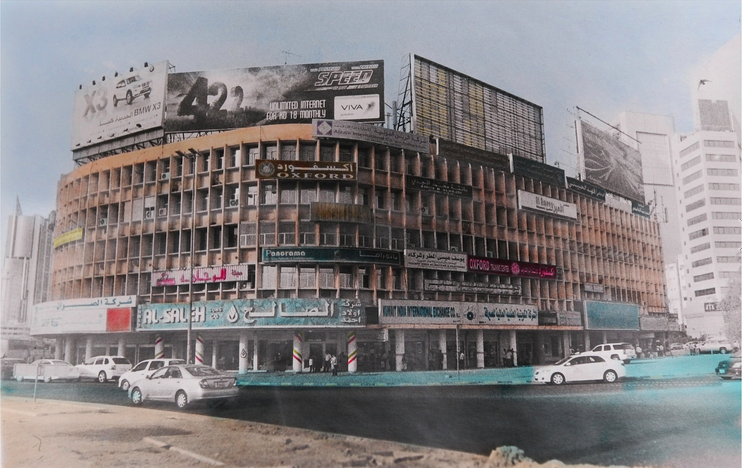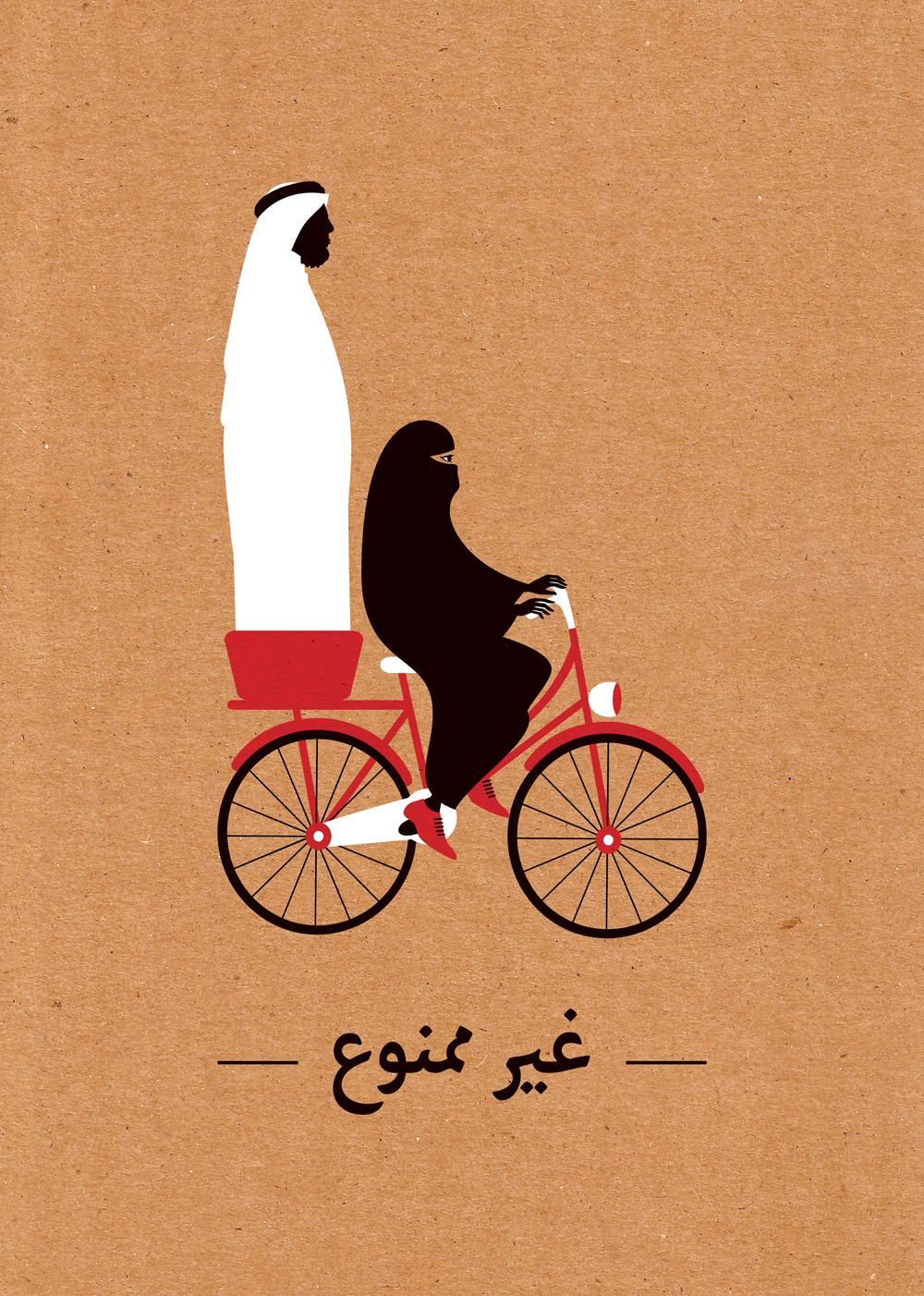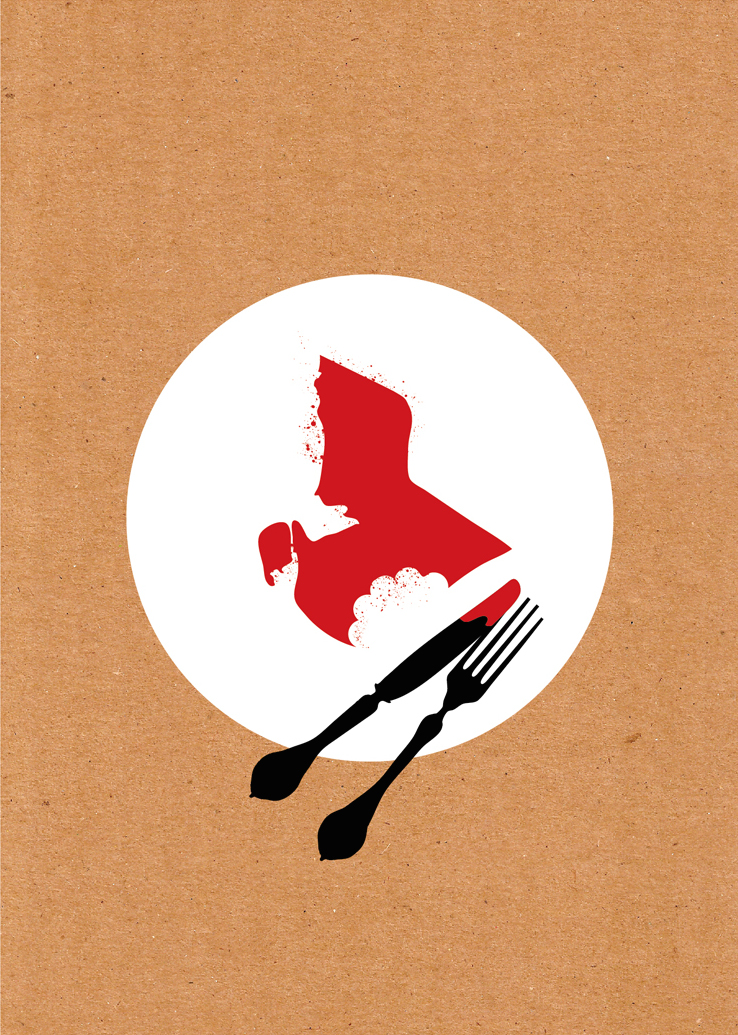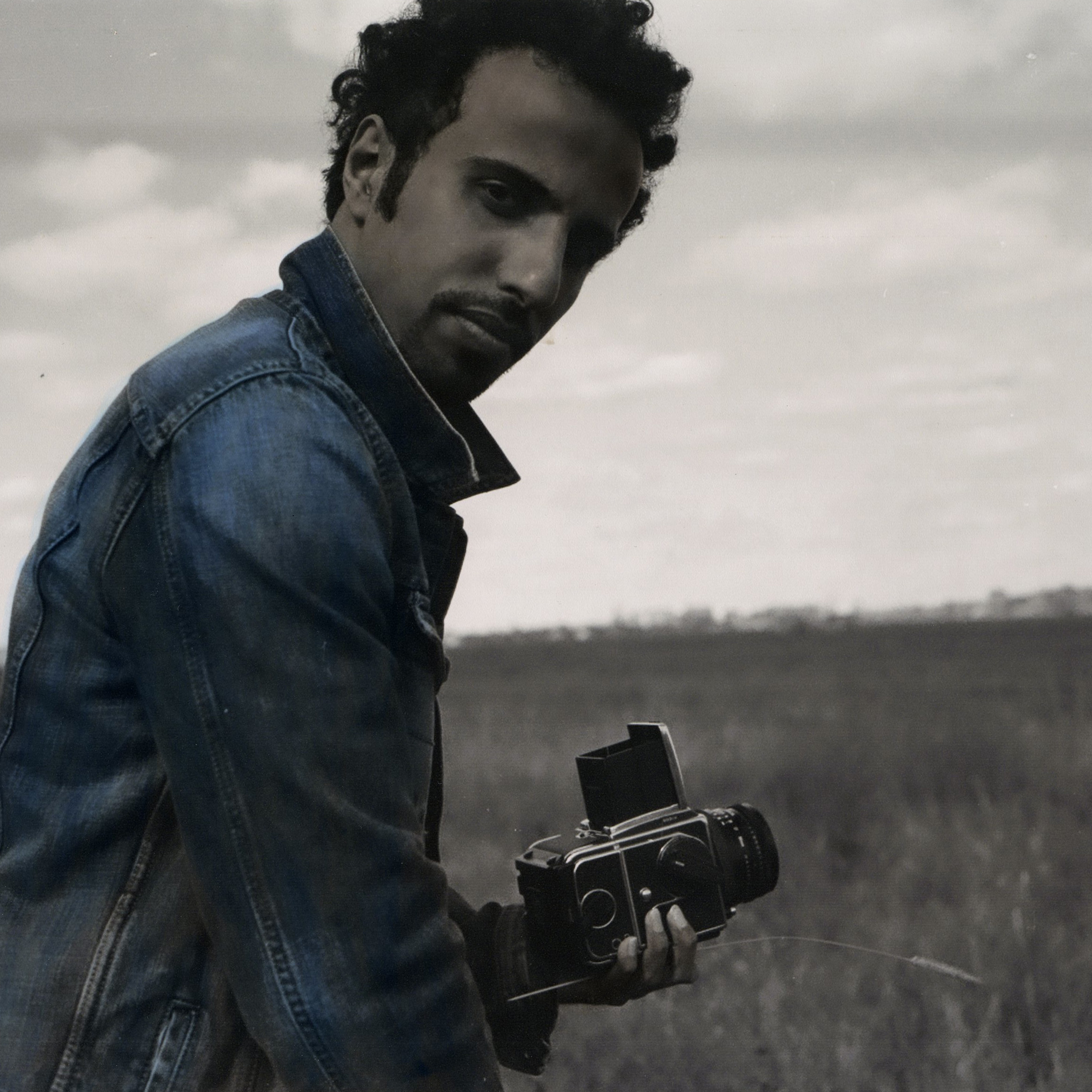‘There is so much talent in Kuwait, but artists are not getting the right support’
For as long as I had been writing about the Middle Eastern art scene, I’d been waiting for an opportunity for young artists in Kuwait to showcase their talent on a regional scale, and obtain exposure the way other artists in the region do. Earlier this year, Ayyam Gallery announced their first Pan-GCC Shabab (lit. ‘Youth’) new media competition, Kunooz. Meaning ‘treasures’ in Arabic, the competition was open to residents and citizens of the GCC. This is it! I thought to myself - even if the winner isn’t from Kuwait, at least they’ll get some attention.
To my surprise, not one, but two winners out of the total three were Kuwaitis. Ambitious and notorious – that’s how I like to describe Mohammad Sharaf, who first received international attention through his controversial posters that confronted a host of sociopolitical issues. ‘Anything that violates humanity gets [on] my nerves!’ said the young artist, speaking about his motivation. In contrast is the calm yet determined photographer Mohammed Al Kouh, who strives for originality without breaking away from his roots.
I recently met with Sharaf and Al Kouh to talk about Kunooz, the Kuwaiti art scene, and how neither of them could ever even imagine winning a regional competition.
Why did you participate in Kunooz?
Sharaf - I grab every opportunity to show my work, especially in regional or international competitions, because they are more fair and have no personal preferences; you get judged based on your work and [your] art, not [on] who you are, or [who] your connections [are]. Besides, Ayyam is a well-known [and] established gallery in the region, and [I would get good exposure] with them … why not? My friends asked me to try my luck. Honestly, it was a last-minute decision.
Al Kouh – I agree with most of Mohammad said, but personally, I don’t like to take part in competitions because I think they are unfair – especially if there are too many restrictions and conditions that don’t give artists much space to be creative. But in Kunooz, the sky was the limit with [respect to] the concept, theme, medium, and [the] tools; the only rule was not to have a solo exhibition [beforehand]. I felt I had the freedom to show what I wanted and how I wanted [to show it], and that was why [I participated].
Can you tell us a bit about the series you chose to participate with, and why you chose it?
Al Kouh – Participating in Kunooz was not planned, because I learned about the competition [last-minute], and [as such,] the only ready and complete series I was confident to show was Tomorrow’s Past. The series is about the demolishment of buildings in Kuwait that were built in the 60s and the 70s – Kuwait’s ‘Golden Age’. I photographed and hand-coloured each image, visualising what they [must have] looked like back in the glory days. [The series] is an attempt to revive the past, and through [my] work, I create a parallel between our past, future, and present … I imagine we [are] actually [living in those times].
[The series] started in 2012, and the concept kind of developed itself, as I didn’t have anything in mind when I began photographing the buildings; now, I find myself on this track, which shifted from buildings to people. In my latest work, Touch of Adam, I show two young girls wearing [the] traditional thobe, posing like [the subjects in] Michelangelo’s famous [painting of the same name] in the middle of a dull garden. The thobe here represents something I am afraid will fade away and disappear after 50 years. It is a part of our culture and history, and [the subjects] are trying desperately to connect with our past.

Mohammed AlKouh - The Rolls-Royce Building (from the Tomorrow’s Past series)
Sharaf – [My series,] Visual Reactions [features] silkscreen printed posters tackling issues that either bothered [me], made me happy, or that triggered my feelings and made me want to take action. [The works] can be political (e.g. Mohammad Morsi and Steak of Kuwait), about humanity (e.g. Remaining), about [subjects such as] hunger in Somalia, or [about] social issues (e.g. Allowed). For Kunooz, I chose the works [that had a] regional or international [appeal], rather than [ones that focused] only on local issues. My posters are bold; they carry hidden and obvious messages [that are] all open to interpretation. I aim to grab [the] public’s attention to [show them] what is going on. One can’t look at my work without first understanding the obvious message and then the hidden ones. Raising questions is the reaction I seek … my [preferred] platform to showcase my work was social media – I did not [ever intend] to exhibit them.
But some of your works have already been exhibited in galleries …
Sharaf – True. But in a gallery, you reach [a] specific audience, [whereas] social media is open to everyone.
So now, where do you prefer exhibiting your art – in galleries, or online?
Sharaf – Well … [sighs] I honestly enjoy both! With social media [platforms] like Twitter and Instagram, you get to see immediate reactions through comments, and [the images] make people curious to see [what they] look like in real life … showing them in galleries provides the opportunity for these audiences.
Unfortunately, as an artist I feel I am unappreciated in Kuwait … There is so much talent and creativity in Kuwait, but [artists are] not getting the right exposure or support, compared with other countries. [This is the case for both] emerging and established artists
Mohammed, let’s talk about your technique, which is particularly interesting. You hand-colour your own photographs that you manually develop … why did you opt for this style over, for instance, digital photography?
Al Kouh – I [have] always [been] fascinated with vintage photography. When I looked at old pictures of my grandparents, I felt as if they were unreal. Later on, when I visited old studios where they proudly hang hand-coloured portraits (but don’t sell them), I got excited to try this technique. [With this technique], I create my own world and I can do whatever I want, [despite] the entire process plus the [required] effort; I feel it transfers my energy to the work itself. You see, the element that makes an artwork special is the amount of energy and effort put into it. It’s magical. I feel I capture the soul of [my] objects, and therefore, their energy, which makes [my works] real … even if [my subject is] a deserted building. With all due respect to digital photography, I don’t feel [that] a lot of effort [goes into it].
Did you ever imagine that you might win the Kunooz competition? You were shortlisted among 104 participants in the entire GCC.

Mohammad Sharaf - Allowed (detail)
Sharaf – Honestly, no. Looking at the talents in the region and the booming art scene in Saudi and the UAE, I thought I had zero chances [of winning]. But when I [found out] I had won, I was happy and proud, because … winning such a competition says something about my work and the standard of [art] in Kuwait. It stands out.
Al Kouh – I couldn’t believe that I [had] won – it was shocking. Initially, I participated just to raise attention about my work, and had no hopes of winning, as the competition was open to anyone in the GCC, [making it] tough, especially [with all the artistic] talent in Saudi Arabia – we are all witnessing how strong the scene [is] there. The shocking [part] was not only that I had won, but [also] that two Kuwaitis had won.
Both of you talk about two Kuwaitis winning the competition as if it were something incredibly improbable … this says something about the art scene in Kuwait, don’t you think?
Al Kouh – Unfortunately, as an artist I feel I am unappreciated in Kuwait, and [have] always had the feeling [that] my work [would] be recognised abroad. There is so much talent and creativity in Kuwait, but [artists are] not getting the right exposure or support, compared with other countries. [This is the case for both] emerging and established artists; it is mainly about your connections. It is also sad that galleries have unidentified criteria when it comes to exhibiting, and art galleries in Kuwait don’t necessarily show fine art, but also arts & crafts, and also host fashion events. With all due respect, it makes them lose their credibility as [representatives of] fine art. [The galleries] feel like [too much like] businesses, and rarely do you find anyone who is willing to take a bet on upcoming artists.
Sharaf – Coming from an artistic background, I kind of witness how things go around. My father was an acknowledged artist in the Middle East who won awards back in the 80s, but in Kuwait, no one approved [of] showing his work, because it was ‘too political’, as they told him. He stopped painting after a while. Ironically, although [times have] changed, this mentality hasn’t, and there was a time in my life when I stopped doing anything because of disappointment. Art entities impose their own preferences in order to approve exhibiting your work … I mean, they don’t consider anything done digitally as art! But recently, things are changing … [we’re] taking baby steps.
How so?
Sharaf – Ten years ago, we rarely heard about any activity in galleries – [there was] a very limited audience and crowd. But now, it’s getting better, slowly. There are more young people interested in art, and the level of education in art is growing. I hope to see critics and mentors who develop artists’ [talent] and make [them] ask the right questions.

Mohammad Sharaf - Steak of Kuwait
Al Kouh – Yes, it is getting better. There are young artists’ exhibitions, more group shows, auctions, etc … However, [the art scene] needs to have more ‘noise’; [it] needs to be louder, as we have enormously talented people [here]. We [need more] facilities to support them.
Speaking of noise, you two created quite a buzz after winning the competition – how did the Kuwaiti art scene and community react to the news?
Sharaf – The only reaction I got was from relatives, friends, and people who follow my work through social media, who congratulated me. But attention from the local media? Nothing! In fact, I got more attention from abroad about winning than here. At the end of the day, any regional or international acknowledgment of me is an acknowledgment of Kuwait. We represent the country, with or without local support.
Al Kouh – Specific media only focused on the event – [the] art community should [have] highlighted this in Kuwait, but unfortunately, nothing happened. Unlike [elsewhere in] the Pan-GCC art scene, in Kuwait there is a large variety of work among artists, but as we both said, the problem is weak exposure and support. For [the] media, it doesn’t take much – just a small article in [a] newspaper or a post on a blog will create buzz, [especially] taking into consideration that well-established blogs in Kuwait attract thousands of readers daily! Winning Kunooz is a wake-up call.
Sharaf and Al Kouh’s portfolios can be viewed here and here.

